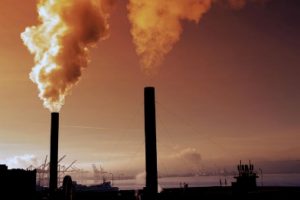
Presence of undesired substances like oxides of nitrogen and sulphur, suspended particles like unburnt carbon particles and hydrocarbons in increased quantity in the air is called air pollution. Gases that cause air pollution are sulphur dioxide, nitrogen oxides, carbon monoxide, hydrogen sulphide, hydrogen cyanides.
Air pollution could be categorized two types:

Effects of air pollution:
On human beings:
On Plants:
Acid Rain